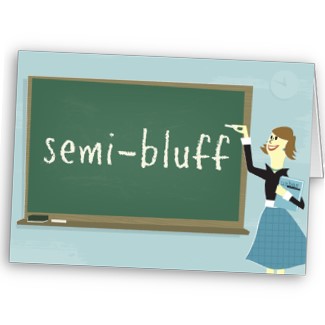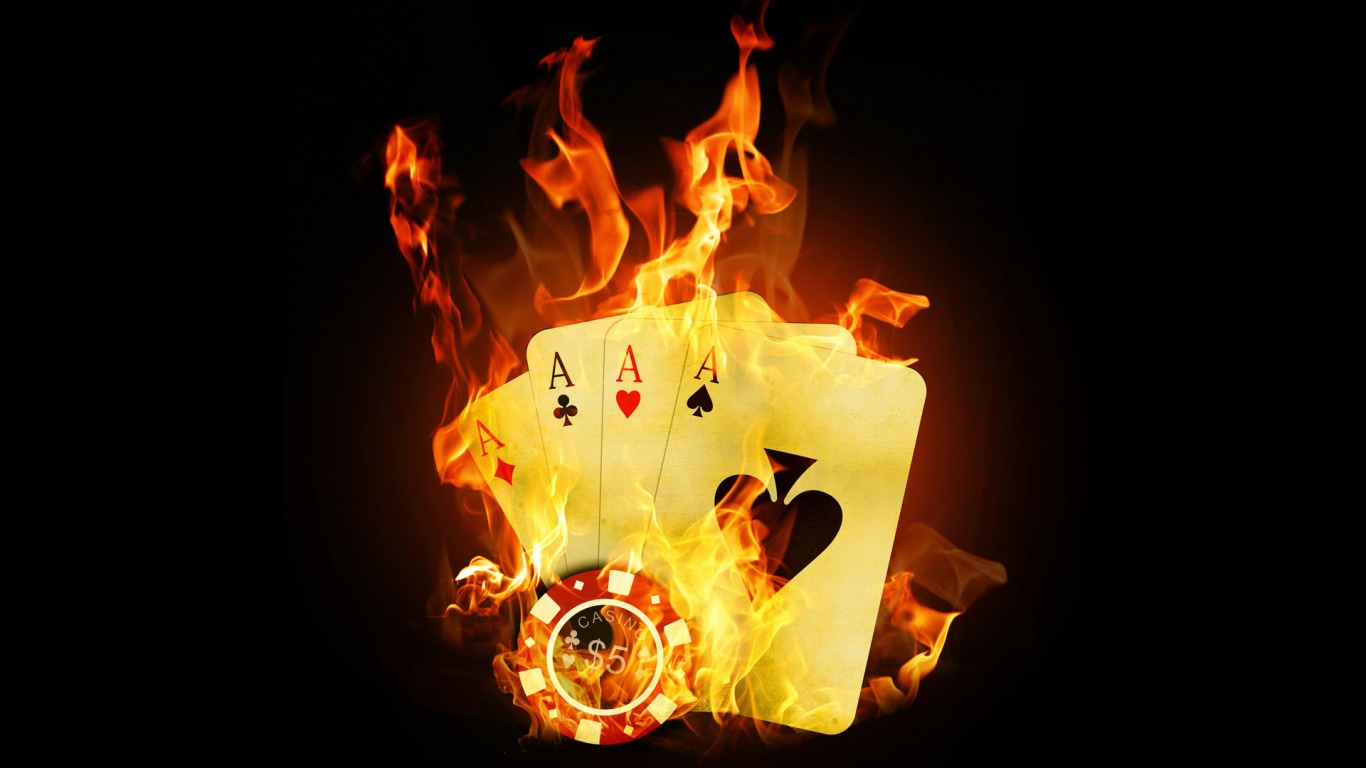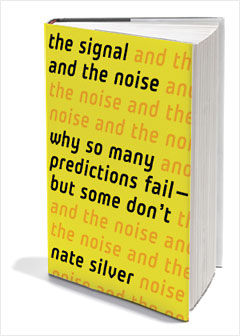
By: Kidam
The semi-bluff is a concept that almost all players understand. It is a basic concept in several books. On the other hand, I notice that few people (in my experience at least) use it. The difficulty to write a poker strategy article is that there are so many factors and details to consider that it is easy to fall into the trap of the "too many details". Short, if article contains 1 million details and details, it will be more difficult to understand and less useful as the situation described in the article will be unique and will not be able to help you in your poker daily. On the other hand, if it contains too little detail, may make mistakes of logic and reasoning or not be precise enough to be understood. I'll still try to give you an example of semi-bluff I like to incorporate in my game. Examples might be infinite course.
You are at a table of 6 max and you have $ 100 or 100 big blind.
You are in the big blind with Kd - Qd and the cutoff (which owns 100BB also) which opens a range of 35% of this position opens $ 3. All the players have folde before him and the two players that follow also fold.
It is up to you to play. Here, two options are available to you (not folder obviously question); caller or 3better. Caller because decide you that you are not comfortable playing a 3bet pot out of position with a hand that could be dominated. If you 3bettez, you may also make folder of the hands that you dominate like KJs, KTs, QJs.
The flop comes Td - 2 s - 5 h
With a range of 35%, your opponent will have a 1.4% of the time set, an overpaire 5.5% of the time and top pair 15.2% of the time. In other words, if it is not the kind to floater, it may caller a check - raise approximately 20% of the time if he decides to cbetter.
You check and your opponent cbet. You look at the statistics of your opponent, and you see that it is the aggressive type. Its cbet is very high, its frequency of double barrel (cbet flop + turn) is also high. This is not the type of player to play passively when it is in position and he has the lead.
If you look objectively at your hand, you have "king high", which is far from being an excellent hand, you are out of position, but it is not impossible that you have the best hand.
Against hands like QJs, KJs, for example, you are 85%-bookmark. If your opponent has 33, 44, 66, 77, 88, 99, you have 31% equity. But here, regardless of whether you have 85% or 31% equity, it does change a lot of things in the equation; you do not have the lead, you are out-of-position and you K high, i.e., if your opponent is aggressive and setting it on the 3 streets, it is unlikely that you "hero calliez" with K high to the river. In short, even if KJ and that you have the best hand, you will probably lose the hand (if you do hit a card that will improve your hand).
For these reasons, due to check-caller is not very interesting. Folder every time in this situation will make you a usable player. Else the option to check - raise.
As we said earlier, you have king high here and your hand is far from being a monster. On the other hand, a point of positive, you have 2 overcards, you have a runner-runner (or backdoor) flush draw and a backdoor straight draw. Obviously, you won't make a flush very often returned to the river. On the other hand, if you're sufficiently aggressive, your equity in the hand combined with your fold equity will ensure that the fact check - raiser in this situation will be profitable for you.
Even if your opponent call your check - raise on the flop with 99 for example, it will be very difficult for him to get to the river if you're sufficiently aggressive. Less than hitting a 9 on the turn or river or the turn and River are small maps and your opponent really do not like folder, you will end up well by him do sleep its 99.
Imagine the following situation to facilitate explanation.
You decide to check - raiser and your opponent you call in position. Here, when he call, there may be several hands: AA, AKs, AQs, KK, QQ, JJ, TT, 55, 22, 99, AT 88 or perhaps even a 77 a bit stubborn. What range of hands, you have 25% equity. But this equity is theoretical because you know like me that your opponent cannot caller a check - raise flop, a turn bet and an all-in river has only a non-enhanced 77 or a 99. In other words, it will not go to the showdown with all the range which call a check - raise on the flop. Against many of these hands, you have of fold equity, which increases your total equity in hand.
The goal here is not to bluff his stack every time in this situation. The goal is to know when to continue with its semi-bluff and when to abandon. So, to recap the situation, you raisé check the flop and your opponent a calle.
What are the maps on which you are going to bet on the turn? Any map tile (10 outs), no matter what valet that will give you an open-ended straigth draw and who will be an over card Board (3 additional outs) no matter what as (3 outs additional, unless of course that your opponent has little likely AT or AA), no matter what King (3 outs that will give you top pair and surely the best hand), and no matter what Lady ((3outs). Therefore, on 22 maps, you can continue to bet (semi-bluff or value) what makes so that you can continue to bet approximately 44% of the time on the turn. Another plus side is that if your opponent is really stubborn and it places you on a bluff, it can caller 2 streets on a K turn for example is saying that it is an excellent card for you to continue to bluff.
If you add your fold equity on the flop (your foldera one opponent % of the time on the flop), your fold equity on the turn, your equity on the river and your equity in the hand fold (the times where you will make top pair, two pair, a straight or a flush), you go counts your opponent fold a very large percentage of the time and you lose your stack only a small percentage of the time. Other times you do a straight and your opponent you call with 2 pair or a set.
On the flop if your opponent call your check - raise with a hand that is not a float (AA, KK, QQ, JJ, TT, 88, 77, 55, 22, ATs, ATo, AKs, AQs, AJs), this will make sure it callera 7% of the time. If you hit one of your 22 outs on the turn and continue to bet, your opponent cannot continue with 4% to 5% of its range. And you will fold the best hands of course.
In summary, playing a semi-bluff is not only the art of check - raiser a the straight draw or a draw to the flush on the flop!
If you have any comments or clarifications to be made to this article, feel free to do so.
Discuss this article on our forums: an example of semi-bluff




